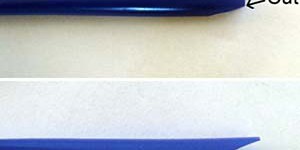Summary
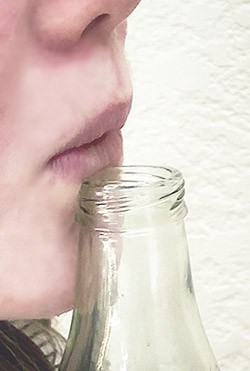
Introduction
Have you ever blown across a bottle's top and made a pleasant, resonant sound? If so, have you wondered how that note is made exactly? The exact note you hear depends on the resonant frequency of the air in the bottle. Musical instruments like ocarinas operate based on a similar principle. In this science activity, you will use bottles to investigate how the volume of the air in the bottle affects the pitch of the note that it makes.Materials
- Narrow-neck bottles (3). They can be glass or plastic.
- Permanent marker
- Ruler
- Water
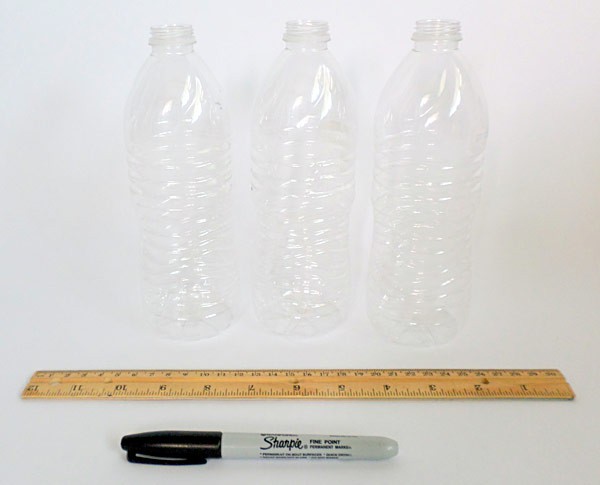 Image Credit: Teisha Rowland, Science Buddies / Science Buddies
Image Credit: Teisha Rowland, Science Buddies / Science Buddies
Instructions
- Try blowing across the tops of the bottles you picked to make a resonant sound. Do this by touching your lower lip to the edge of the bottle, pursing your upper lip, and blowing gently over the opening. When you get the airflow just right, you will hear a musical note as the air column in the open bottle resonates. How does the bottle sound? If you cannot make a note on the bottles, try using some different bottles for this activity.
 Image Credit: Teisha Rowland, Science Buddies / Science Buddies
Image Credit: Teisha Rowland, Science Buddies / Science Buddies
- Using a ruler, measure the height of one of the bottles. Using a permanent marker, make a small mark at exactly halfway up the bottle. Fill this bottle with water up to the mark you made.
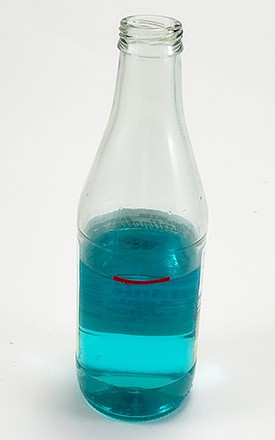 Image Credit: Teisha Rowland, Science Buddies / Science Buddies
Image Credit: Teisha Rowland, Science Buddies / Science Buddies
- On another bottle, use the permanent marker to make a small mark at exactly three-quarters up the bottle. Fill this bottle with water up to the mark you just made. (Leave the third bottle empty.)
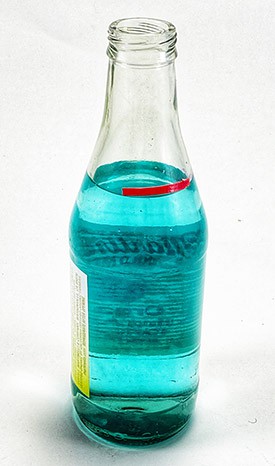 Image Credit: Teisha Rowland, Science Buddies / Science Buddies
Image Credit: Teisha Rowland, Science Buddies / Science Buddies
- Blow across the top of the empty bottle, as you did before. Make sure you can make a clear note. Then blow across the top of the half-full bottle.How does the note that the half-full bottle make compare to the note made by the empty bottle? Is the note from the half-full bottle higher or lower in pitch?
- Then blow across the top of the bottle that is three-quarters full. It may take some practice to make a note from this bottle.How does the note that this bottle makes compare to the note made by the half-full bottle? Is it higher or lower in pitch than the half-full bottle?
- Overall, how do the notes made from the three bottles compare to each other?
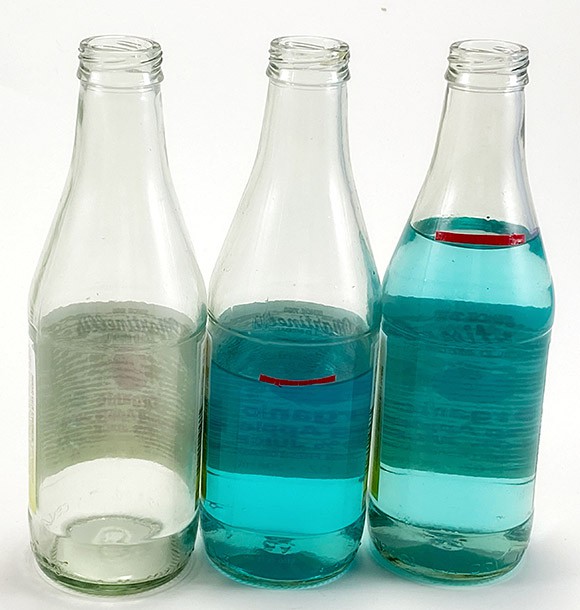 Image Credit: Teisha Rowland, Science Buddies / Science Buddies
Image Credit: Teisha Rowland, Science Buddies / Science Buddies
What Happened?
You should have heard that the empty bottle produced the lowest pitch, and the bottle that was filled three-quarters full with water made the highest pitch. The pitch of the sound you hear depends on the frequency of the vibrations of the air in the bottle. This frequency depends on several factors, including the area of the bottle's opening or neck, the length of the neck section, and the volume of air inside the bottle. When you add water to the bottle, the dimensions of the neck stay the same, but the volume of air inside the bottle decreases, causing the resonant frequency to increase. In other words, the pitch depends on how much water is in the bottle and how much empty space is left in the bottle. The less air there is in the bottle, the higher the frequency. And the higher the frequency, the higher the perceived pitch.Digging Deeper
Musical instruments produce sounds using vibrations. Ultimately, these vibrations are always transmitted to our ears as sound waves, or vibrations that travel through the air. However, the source of these vibrations is different depending on the instrument. For example, it can be a string on a guitar or violin, a membrane on a drum, or air inside instruments with a variety of different shapes (e.g., a flute or a tuba).
The plastic bottle in this activity is an air cavity, or a container with an opening that is smaller than the width of the rest of the container. This type of cavity is also called a Helmholtz resonator. The resonant, or "natural," frequency of vibration of a Helmholtz resonator increases as the cross-sectional area of the opening increases, and it decreases as the length of the opening or volume of air inside the cavity increases. You can learn about the exact equation for the resonant frequency using this page from Hyperphysics. Note that a Helmholtz resonator is not the same as an open-ended air column, where the opening is the same width as the rest of the container. In that case the resonant frequency only depends on the container's length.
In this activity, as you added water to the bottle, the volume of air in the bottle decreased, while the dimensions of the bottle's neck stayed the same. This resulted in an increased natural frequency of vibration, and therefore a higher pitch for the sound.
Ask an Expert
For Further Exploration
- If you have a piano, electronic keyboard, or other musical instrument (or an electronic chromatic tuner), you could try comparing the notes from the bottles to the notes on a real instrument. Alternatively, you could try filling a bottle slowly up with water, checking what notes it makes as it becomes fuller, and comparing those to a real instrument. What notes does it sound like the bottles are making? Can you figure out a relationship between the three notes from the bottles used in this activity?
- Try repeating this activity but use bottles that are different shapes and sizes. Does the shape or size of the bottle affect the note it makes? What about the height of the bottle?
- If you have narrow-neck glass bottles, instead of blowing over the top of the bottle, try tapping the bottle (below the waterline) with a wooden mallet. How does the note produced by tapping the bottle change with the water level in the bottle? Can you explain how this works?




